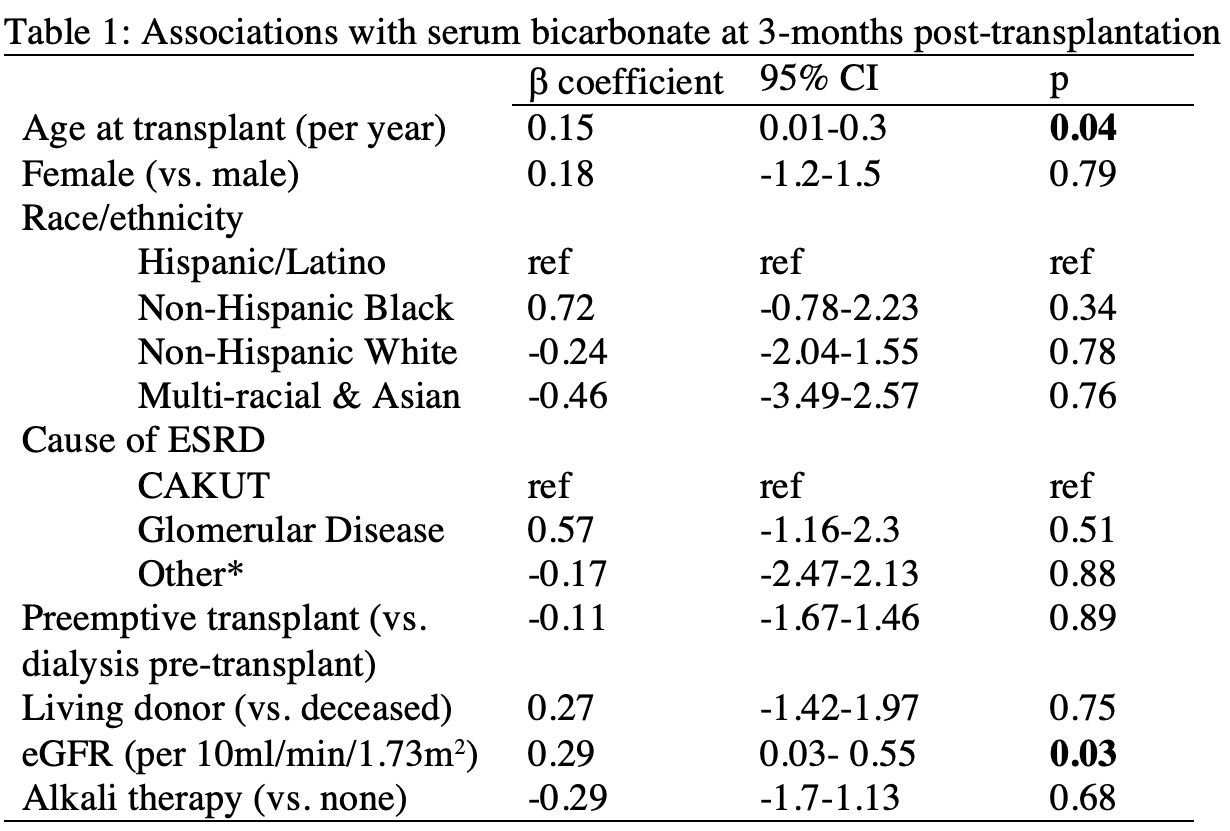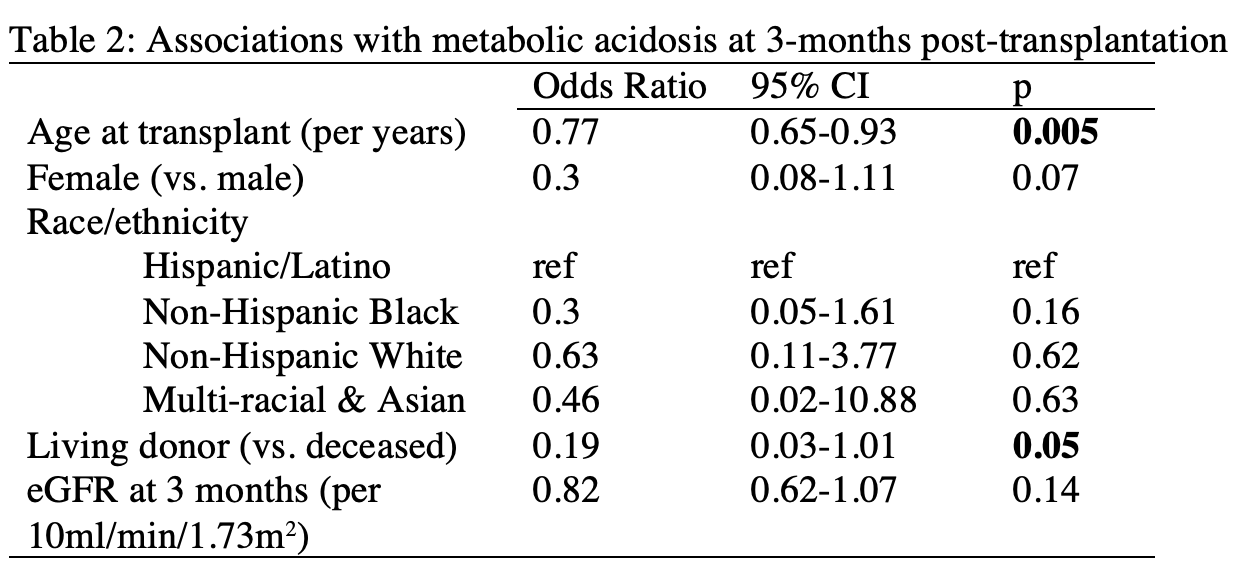Clinical characteristics associated with metabolic acidosis in pediatric kidney transplant recipients
Stella Kilduff1,2, Nicole Hayde1,2, Matthew Abramowitz2.
1Pediatric Nephrology, The Children's Hospital at Montefiore, Bronx, NY, United States; 2Clinical Research , Albert Einstein College of Medicine, Bronx, NY, United States
Introduction: Among kidney transplant recipients, metabolic acidosis remains a highly prevalent complication that often goes unnoticed as it is expected to resolve after transplantation. Adult transplant studies have revealed variable prevalence of metabolic acidosis ranging from 12-58% and have identified it be a risk factor for graft failure and patient mortality [1-6]. No study has systematically examined metabolic acidosis in pediatric kidney transplant recipients.
Methods: Children <18 years of age who received a kidney transplant at Montefiore Medical Center from 1/1/10-12/31/18 and had 3-month post-transplant lab data were included unless they underwent multi-organ transplant (n=3), or experienced graft loss/had eGFR <30 ml/min/1.73m2 prior to 3 months (n=1). Cross-sectional associations with serum bicarbonate and with metabolic acidosis (serum bicarbonate <22 meq/L or requiring alkali therapy) were examined at 3 months post-transplant using multivariable linear and logistic regression, respectively.
Results: 63 patients were eligible for study inclusion. Mean age at transplant was 9.9±5.4 years. Baseline serum bicarbonate was 21.7±2.4 meq/L, 45% had serum bicarbonate <22meq/L and 44% were receiving alkali therapy. The prevalence of metabolic acidosis was 70%. Each 1-year higher age and 10 ml/min/1.73m2 higher eGFR were associated with 0.2 meq/L (95% CI 0.02-0.31) and 0.3 meq/L (95% CI: 0.03-.55) higher serum bicarbonate, respectively (Table 1). Older age at transplant was associated with 21% lower odds of metabolic acidosis (95% CI: 0.66-0.94) (Table 2). Patients with a living donor transplant had 84% lower odds of metabolic acidosis (95% CI: 0.03-0.89).


Conclusion: Lower age and eGFR were associated with lower serum bicarbonate in children 3 months after kidney transplantation. In addition to older age, living donor status was associated with lower odds of metabolic acidosis. Future studies should examine determinants of serum bicarbonate over time and the impact of metabolic acidosis on pediatric transplant outcomes.
NIH/National Center for Advancing Translational Science (NCATS) Einstein-Montefiore CTSA Grant Number UL1TR001073.
[1] Djamali, A., et al., Metabolic Acidosis 1 Year Following Kidney Transplantation and Subsequent Cardiovascular Events and Mortality: An Observational Cohort Study. Am J Kidney Dis. 2019. 73(4): p. 476-485.
[2] Park, S., et al., Metabolic Acidosis and Long-Term Clinical Outcomes in Kidney Transplant Recipients. J Am Soc Nephrol. 2017. 28(6): p. 1886-1897.
[3] Raphael, K.L. and F.S. Shihab, Acidosis and Kidney Allograft Survival. J Am Soc Nephrol . 2017. 28(6): p. 1672-1674.
[4] Ritter, A. and N. Mohebbi, Causes and Consequences of Metabolic Acidosis in Patients after Kidney Transplantation. Kidney Blood Press Res. 2020. 45(6): p. 792-801.
[5] Schulte, K., et al., Effect of Sodium Bicarbonate in Kidney Transplant Recipients With Chronic Metabolic Acidosis. Transplant Direct. 2019. 5(7): p. e464.
[6] Skiba, K., et al., Metabolic acidosis in kidney transplant recipients. Pol Arch Intern Med. 2018. 128(10): p. 587-593.